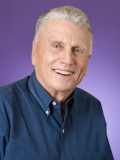非常抱歉,
你要访问的页面不存在,
非常抱歉,
你要访问的页面不存在,
非常抱歉,
你要访问的页面不存在,
验证码:

职称:Professor
所属学校:Texas Christian University
所属院系:College of Science & Engineering
所属专业:Engineering, General
联系方式:817.257.6318
Patrick Walter graduated in 1965 with a BSME from The Pennsylvania State University and hired into a Component Test (shock, vibration, climatic, … and functional test) organization at Sandia National Laboratories in Albuquerque, NM. Concurrent with his employment, he completed his MSME in 1967 at the University of New Mexico. He subsequently became a Project Leader in a flight telemetry organization and was responsible for transducer calibration as well as both transducer and flight electronics development. Among other early accomplishments, he developed some of the first high shock sensing capabilities for large caliber guns and earth penetrators. In 1976, Sandia sponsored his doctorial studies at Arizona State University (ASU) with now Professor Emeritus Peter K. Stein, founder of ASU’s Laboratory for Measurement System Engineering and Professor Harold D. Nelson, structural dynamics expert and founder of Texas Christian University’s engineering eepartment. Pat’s Ph.D. dissertation involved analyzing structural test data from the Trident I strategic missile system. In 1978, Dr. Walter resumed full time employment at Sandia and was promoted into test management shortly thereafter. Among the many organizations/functions he supervised were Transducer Development and Calibration, Measurement Consulting, Telemetry Component Development, Telemetry System Packaging for Weapon System Stockpile Surveillance, Mass Properties, Test Facilities Development, and Precision Inertial Test System Development. In 1987 he was transferred as Supervisor Test Operations for the Kauai Test Facility, a rocket launch facility on the Pacific Missile Range Facility (PMRF), Kauai, HI. Subsequently he became responsible for developing and launching rocket systems from Sandia and NASA facilities. These rocket focused activities supported President Regan’s Strategic Defense Initiative (SDI). Post Cold War (1991-1995) Dr. Walter established a joint Sandia-Federal Aviation Administration (FAA) program as part of the FAA’s congressionally mandated Aging Aircraft Program. He validated this program with the aircraft and engine OEMs, the Air Transport Association, and other organizations, and it remains contributory today on Albuquerque International Airport. During his entire Sandia tenure (1965-1995), Dr. Walter’s professional focus was on flight, field, and laboratory measurements (e.g., displacement, velocity, strain, accelerations from milli-gs to > 100,000 gs, acoustic level pressures to 10’s of thousands of psi, temperature, flow, and much more) to support test and evaluation activities. His professional interests spanned the entire measurement chain: transducers, signal conditioning, acquisition systems, and end data analysis. In 1995, Pat accepted a position in the engineering department at Texas Christian University (TCU). Professor Walter developed TCU’s Experimental Mechanics and Structural Dynamics Laboratories and established an industry based Senior Design Program focused around test, calibration, and control activities. He transferred the majority of his professional interests and contacts with him to TCU and continues to work in these areas. From 1996-2003, he consulted for Endevco Corporation, a major supplier of dynamic instrumentation. From 2003 through today he consults as Senior Measurement Specialist for PCB Piezotronics, the world’s largest supplier of dynamic instrumentation. He also consults for various aerospace and defense contractors and other organizations on test measurement applications. Through TCU’s Engineering and Extended Education Departments, he has developed a Measurements Systems Engineering short course, which he teaches nationally and internationally.
In 1995, Pat accepted a position in the engineering department at Texas Christian University (TCU).